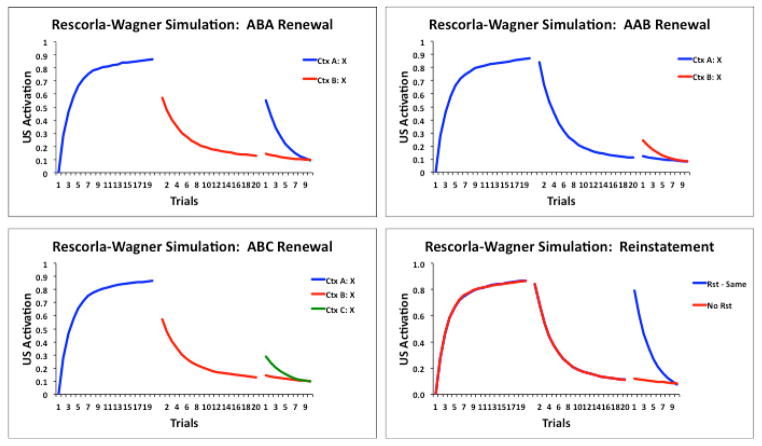Figure 2.
Rescorla-Wagner (1972) model simulation results showing the associative strengths (US activation values) to a hypothetical stimulus X that received CS-US pairings during an acquisition phase, nonreinforced presentations during an extinction phase, and further nonreinforced presentations during a test phase. The upper left graph depicts associative strengths in an ABA renewal design where stimulus X is trained in Context A, extinguished in Context B, and then tested in either Context A or B. The upper right and lower left graphs show, respectively, corresponding simulation results from AAB and ABC renewal experiments. In all three cases greater associative strengths are produced under conditions that generate renewal, and the magnitude of ABA renewal is greater than either ABC or AAB renewal. The lower right graph simulates the US reinstatement effect, where training, extinction, and test all occur in the same context but prior to testing either the US is separately presented or not. The US reinstatement procedure is simulated to produce higher levels of responding to stimulus X.

